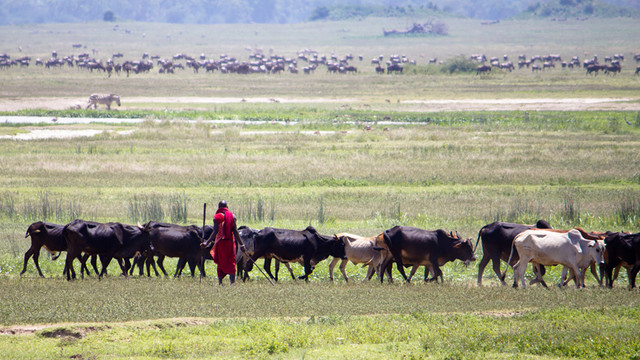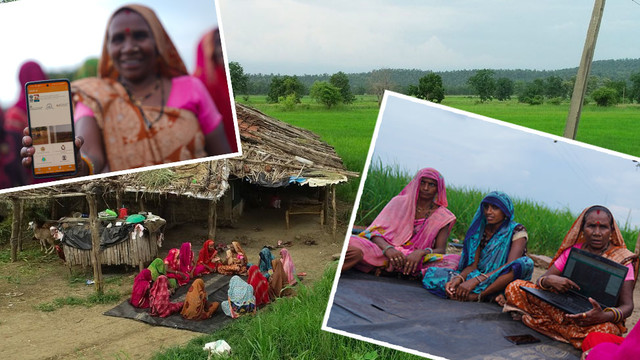Accessing climate finance in Kenya
Devolved powers are allowing communities greater access to climate finance in four counties in Kenya.


Makueni County: farmers in Kenya learn about crops for climate adaptation planning. Makueni was the first county to enact the new climate finance legislation (Photo: S.Kilungu/CCFAS via Flickr, CC BY-NC-SA 2.0)
In Kenya, four arid and semi arid counties (Isiolo, Garissa, Kitui, and Wajir) are at an advanced stage of approving their County Climate Change Fund (CCCF) legislation. These new measures are providing local communities with access to climate finance and greater say in how it is spent.
Makueni County was the first county in Kenya to enact CCCF regulations which will allow them to access climate finance from their own budget, as well as from national and international sources.
CCCF legislation commits counties to contribute a minimum percentage of their development budget to local adaptation finance, empowering residents through their elected Ward Adaptation Planning Committees (WAPCs) to set priorities on how the 70 per cent of the funds set aside for adaptation will be used.
The CCCF approach, initially piloted in Isiolo and now being replicated in Makueni, Garissa, Kitui and Wajir, makes use of funding from the UK government's Department for International Development (DFID). Communities through the elected Ward Adaptation Planning Committees draw down from the constituted pot to finance investments that builds their resilience to climate change.
Following Isiolo's example on resilience building
In Isiolo, where the project was first piloted, the fund has helped community members build their resilience to climate change through investing in infrastructure, such as sand dams to trap rainwater, providing a clean and reliable source of water during droughts.
The fund has also helped strengthen customary resource management institutions – for example "dedhas" among the Borana community – to manage the variable resources, and has been used to renovate a veterinary laboratory to help in faster diagnosing and treatment of livestock diseases, as well as to rehabilitate and fence water pans, which are important wet season water sources.
Local climate information is used to inform the nature of investments to ensure they build resilience not only for today's climate variability and shocks, but also for future climate change.
The ADA Consortium has produced a video showing how the ward committees made decisions about prioritising investments.
Authority to plan under the constitution
Under the constitution of Kenya, county governments have been granted authority and responsibility for developing their county's social and economic aspects according to local priorities.
The devolved CCCF mechanism furthers this objective by building capacity among the local people and the county government to identify, prioritise and fund plans at ward and county level for public good-type investments that promote climate resilient growth and adaptive livelihoods.
The CCCF has provided county government agencies with an opportunity to test an innovative devolved financing model and to prepare themselves so that they can draw down global climate finance for adaptation and climate resilient development.
The CCCF is also in line with the country's Public Finance Management Act (PFMA). This empowers the County Executive Member in charge of finance, with approval from the County Executive Committee and County Assembly, to establish a public fund, which can be resourced from different sources including budgetary allocation, private sector, national and international sources.
Where climate adaptation programmes are included in the County Integrated Development Plan (CIDP), then such activities can be funded from the county's budget. The bill and regulations from the five counties further stipulate that any balances not spent at the end of the financial year shall be retained in the fund to be used in subsequent years for the purpose of which the fund is established.
Community representation
The CCCF legislation mandates the county government to work with WAPCs, which are made up of and chosen by community members to represent them at the county level.
The WAPCs consult the community on what will build their resilience to climate change, prepare proposals with the communities, procure goods and services for the proposed investment, and monitor the implementation of investments at the ward level.
Communities are informed beforehand on their CCCF allocation, ensuring a high level of engagement and ownership by both communities and WAPCs. This in turn ensures that investments are fully discussed and debated before a decision is made.
To ensure transparency and accountability the fund is managed by a steering committee made up of county officials, civil society organisations, religious institutions, and community representatives. The committee also provides overall guidance on use of the fund and can mobilise more funds both nationally and internationally for CCCF.
The CCCF model offers a cost effective and efficient way of channeling climate finance to the most vulnerable – in contrast to calls for proposals that are mostly won by stronger research organisations, some of which may have very limited engagement with vulnerable communities.
Accessing future finance
The passing and implementation of the CCCF legislation is significant as it offers the five counties an opportunity to become "executing entities" under the Green Climate Fund (GCF).
The GCF was established by 194 governments to limit or reduce greenhouse gas emissions in developing countries and to help vulnerable societies to adapt to climate change impacts. It intends to rise to US$100 billion per year in 2020.
This will considerably increase available resources to finance investments in adaptation and resilience building in support of community-prioritised adaptation.The success of the CCCF model has led to it being replicated in Mali, Senegal and Tanzania.



